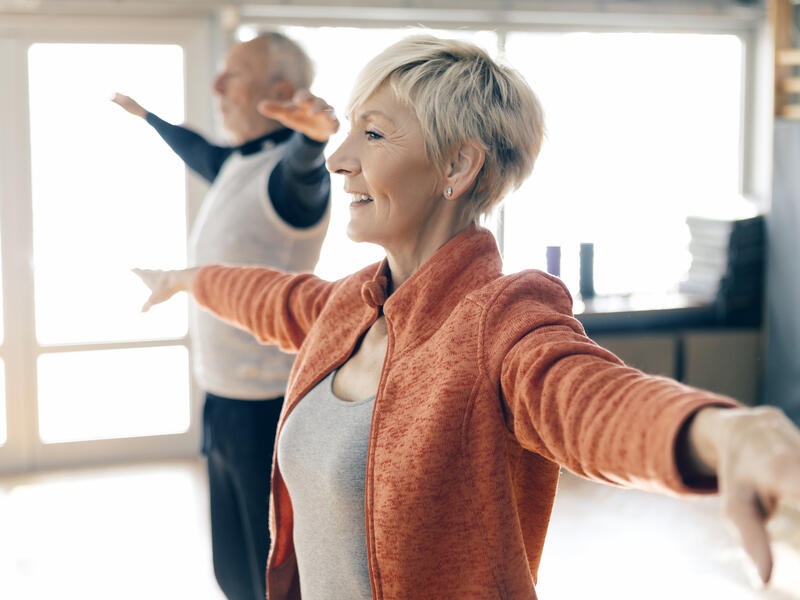Reducing your risk for a dangerous fall is more of an urgent errand than you might realize. Staff members at Good Samaritan Society locations are actively helping adults over 65 years of age learn their risk status through screenings.
“We know that from research, 1 in 4 Americans fall every single year; 20% of them become injured from that fall. We know that 95% of hip fractures in elders are caused from falls,” Kathy Manning, Society Nursing and Clinical Services Manager, says. “Every 20 minutes, one American will die as a result of a fall. Some pretty alarming statistics.”
The good thing is, once you know your risk for falling, you can do something about it.
When fall risk increases
Whether you are at low, moderate or high risk, the Society’s locations have options to keep you on your feet.
“Especially now following COVID and as we’re continuing to work through COVID, we’re seeing that people were not able to be as active in their events and engaged in different exercise programs or activities,” Martha Frohwein, Society Director of Clinical Services for Therapy and Rehabilitation, says. She adds that it has “led to a decrease in strength and mobility and increases their risk for falling.”
Infographic: Reduce your risk of falling at home
The Good Samaritan Society follows a fall prevention strategy known as STEADI. The Centers for Disease Control and Prevention initiative is all about “Stopping Elderly Accidents, Death and Injuries.”
STEADI features three core elements:
- Screening the older adult for fall risk
- Assessing the older adult’s risk factors
- Intervening to reduce risk by giving older adults tailored intervention
“We can recommend evidence-based programming on our campus, such as a group exercise class or fitness program, or therapy services to help them increase their strength, mobility and confidence to decrease their fall risk,” Frohwein says.
Available to residents and more
You do not have to be a resident at the Society to get a screening or engage with therapy and rehabilitation services at each location. Trained individuals are ready to assist you with recommendations if you are at a higher risk following a screening.
“If a fall risk is identified, we may recommend that they would follow up with their physician. Sometimes a medication adjustment may be needed or they may benefit from skilled therapy intervention. We can support them through outpatient therapy available in all of our locations or through home health services where available. If they’re a resident within our location, certainly we can provide intervention to meet their needs as well,” Frohwein says.
Simple screening process
If you’re wondering about the screening process, Manning says locations have toolkits that make them quick and easy. After filling out a form with simple questions, there will be a “Timed Up and Go” (TUG) activity.
“They’ll assess the gait, balance and strength of someone’s walking. That includes what we call the TUG test. It’s a timed get up and go. Basically, the person starts in a chair and they’re timed as to how long it takes to get from one spot. Up from the chair, stand up, go around 10 feet, turn around come back and sit down,” Manning says.
An older adult who takes more than 12 seconds to do this is at risk for falling.
Manning says people don’t have to be. Unfortunately, some who fall and break a hip don’t recover.
“Falls are not an inevitable part of aging. They can be prevented but people need to know what their status is and how at risk they may be so they can do something about that,” Manning says.
Read more
- A Matter of Balance: What goes into fall prevention?
- Protection from winter slips, trips and falls
- It’s safe to get rehab at Good Samaritan Society
…
Posted In Rehabilitation & Therapy, Senior Services, Wellness

